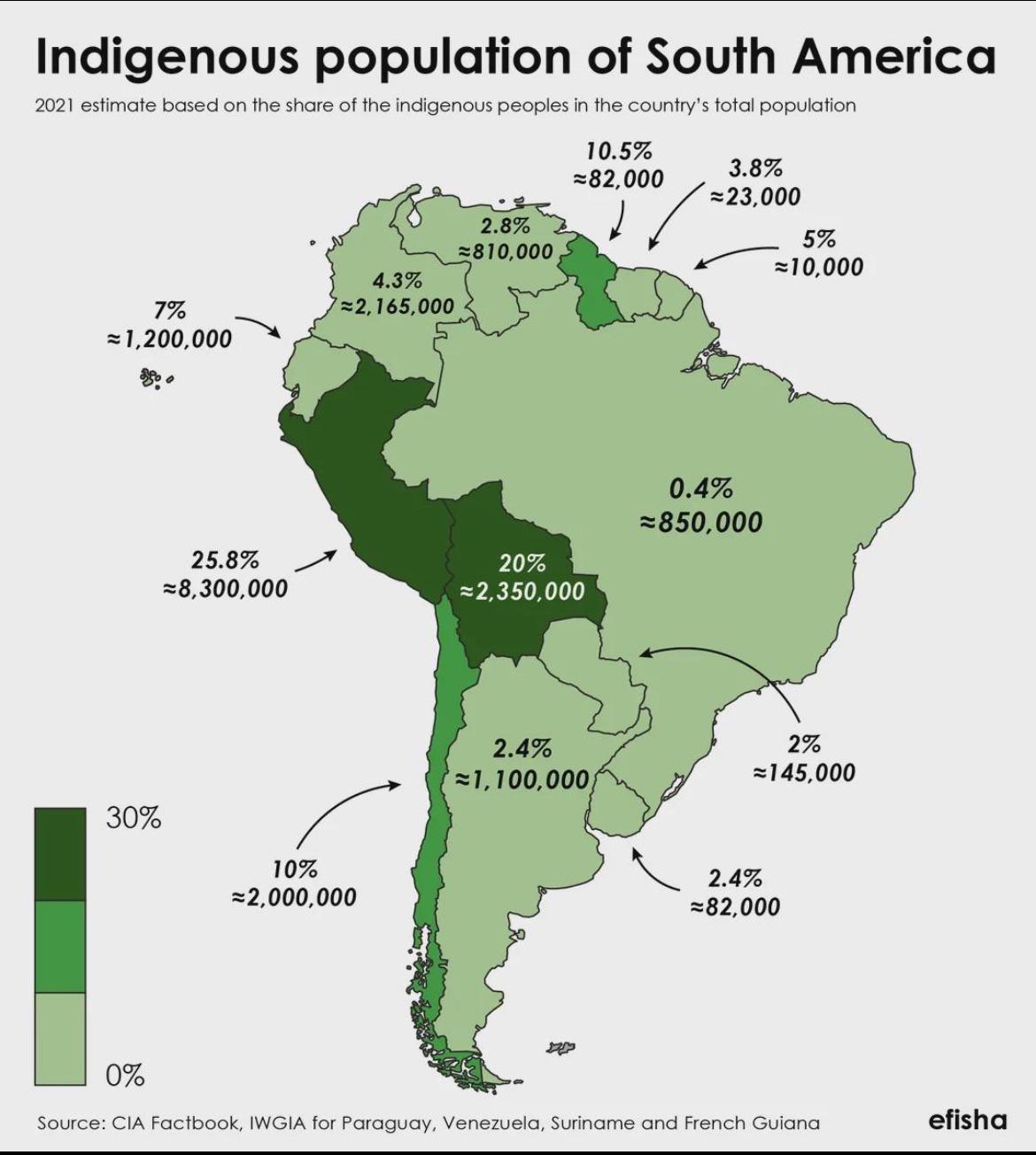Indigenous Population of South America Map


Marcus Rodriguez
Historical Geography Expert
Marcus Rodriguez specializes in historical cartography and geographic data analysis. With a background in both history and geography, he brings unique...
Geographic Analysis
What This Map Shows\nThis map visualizes the distribution and density of Indigenous populations across South America, highlighting the varying proportions of native communities in different countries. From the vast Andes mountains to the fertile plains of the Pampas, this geographical representation allows us to see where Indigenous peoples have maintained their cultural heritage and population sizes despite centuries of colonization and societal changes.
Deep Dive into Indigenous Populations\nThe Indigenous peoples of South America encompass a rich tapestry of cultures, languages, and traditions. Interestingly, there are approximately 400 distinct Indigenous groups in the region, each with its own unique identity and history. These communities have survived centuries of external pressures, including colonization, disease, and globalization, which have threatened their existence.
In countries like Peru and Bolivia, Indigenous populations represent a significant part of the national identity. For instance, the Quechua and Aymara groups in Bolivia account for about 62% of the population, while in Peru, Indigenous peoples make up around 25% of the total population. This notable presence is attributed to a combination of cultural resilience and the preservation of traditional lifestyles, particularly in rural areas.
Conversely, in Brazil, the story is markedly different. Portuguese colonization was characterized by direct conflict, widespread diseases, and slave labor, which led to a drastic decline in Indigenous populations. The remaining Indigenous groups in Brazil, such as the Yanomami and Guarani, have faced ongoing challenges, including land encroachment and cultural assimilation. As a result, Brazilian society is a complex blend of Indigenous, African, European, and Asian heritages, making it difficult to trace and celebrate distinct Indigenous identities compared to its Andean neighbors.
The map also reveals that countries like Argentina and Chile have smaller Indigenous populations, around 3% and 4% respectively, despite their rich Indigenous histories. The Mapuche people in Chile and Argentina have long struggled for recognition and rights, often advocating for land restitution and cultural preservation.
Regional Analysis\nLooking at the map, it's clear that the Andean region is home to a higher concentration of Indigenous populations. Countries like Peru and Bolivia stand out with their significant Indigenous demographics, while the southern cone of South America, which includes Argentina and Chile, shows more sparse populations. This regional variation can be linked to historical colonization patterns, where Spanish colonizers often established settlements that disrupted Indigenous territories, particularly in the south.
In the Amazon Basin, which stretches across several countries, including Brazil, Peru, and Colombia, Indigenous groups such as the Tikuna and Yanomami live in relative isolation. Here, the dense rainforest provides a natural barrier against external influences, allowing these communities to maintain traditional ways of life. However, this isolation also makes them vulnerable to outside threats, including deforestation and illegal mining.
Interestingly, Guatemala and Mexico, though not shown on the South American map, provide a comparative context with their own Indigenous populations, including the Maya in Guatemala. This highlights the broader trends of Indigenous cultures across Latin America.
Significance and Impact\nUnderstanding the distribution of Indigenous populations in South America is crucial for several reasons. Firstly, it sheds light on the ongoing struggles for land rights and cultural recognition faced by these communities. With globalization and resource extraction encroaching on their territories, many Indigenous groups are advocating for their rights more vocally than ever before.
Moreover, recognizing their presence enriches our understanding of South America's cultural heritage. Indigenous peoples often play a vital role in biodiversity conservation and sustainable practices, offering invaluable knowledge about local ecosystems. As climate change continues to threaten these environments, their traditional ecological wisdom can contribute to effective conservation strategies.
Looking ahead, the future of Indigenous populations in South America will largely depend on how societies address historical injustices and land rights. There's a growing movement for Indigenous representation in governance, which could lead to more inclusive policies that respect and protect their cultures and lands. This evolution is vital not only for the Indigenous communities themselves but for the overall environmental stewardship of the continent.
In summary, the Indigenous populations of South America represent a vital component of the region's identity and future. This map serves as a reminder of their resilience and the ongoing challenges they face, encouraging us to reflect on our collective responsibility towards preserving their cultures and rights.
Visualization Details
- Published
- August 15, 2025
- Views
- 154
Comments
Loading comments...